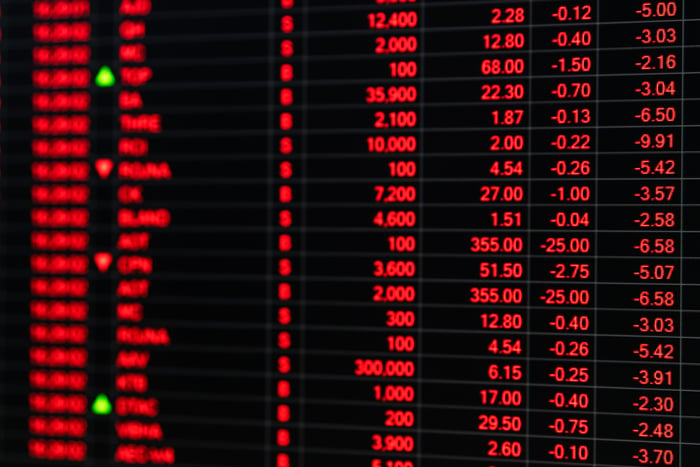1 Unstoppable Vanguard ETF to Buy With $630 During the S&P 500 Sell-Off
This broad-market index gives investors a taste of everything — even more than the S&P 500.
Even Warren Buffett, the greatest stock picker of all time, endorses low-cost, broad-market index funds and exchange-traded funds for most retail investors. This is because most investors don’t have the time to deeply research individual stocks, while broader-market indexes tend to win over time, with 8% to 10% long-term returns on average.
While large banks were the first to create index funds for their institutional clients, Vanguard was the first to offer diversified index funds to the public in 1976. Today, Vanguard is one of just a few major asset managers offering accessible, extremely low-cost index funds, costing investors just a handful of basis points in fees.
After the market’s strong recovery from April’s “Liberation Day” tariff fiasco, here’s the Vanguard fund I’d recommend today.
Buy the total market
Today, technology stocks, particularly around the AI buildout, have soared to very high valuations. Interestingly, some of the largest stocks in the world that have gone up the most, defying the law of large numbers, leaving large indexes like the Nasdaq-100 or even S&P 500 (^GSPC 0.53%) the most concentrated they’ve ever been in recent history.
Of course, there is a good reason why growth-oriented, large-cap technology stocks have soared over the past six months and even the last few years: artificial intelligence. The prospect of generative AI could very well lead to the next industrial revolution; meanwhile, only the largest, best-funded, most technically advanced companies likely have a chance to compete. Therefore, it’s no surprise the “Magnificent Seven” stocks only seem to be getting stronger.
That being said, valuation matters, and the widening gulf between the largest tech stocks and smaller stocks in other sectors is huge. Furthermore, once AI technology is honed and widely distributed, every business in every sector of the economy should be able to benefit from GenAI.
So while investors shouldn’t abandon AI tech stocks en masse, now would also be a good time to look at other types of stock in left-behind sectors. That makes this Vanguard ETF an excellent choice today.

Image source: Getty Images.
Vanguard Total Stock Market Index Fund
The Vanguard Total Stock Market Index Fund (VTI 0.51%) is my recommendation for index investors looking to put money to work today. As the name implies, this index tracks the entire stock market, including large-, mid-, small-, and even micro-cap stocks — the entire investing universe in the U.S.
Of course, a broad-market index will also have high weightings of the large-cap tech stocks discussed. Yet while investing in the total market index fund will still give investors some exposure to the AI revolution, those stocks will have a smaller weight than other index funds, such as the Vanguard S&P 500 ETF (VOO 0.60%). For instance, in the VTI, the largest stock in the market, Nvidia, has a 6.5% weighting, whereas Nvidia sports a 7.8% weighting in the VOO, which tracks the S&P 500, and a 9.9% weighting in the Invesco QQQ Trust (QQQ 0.73%), which tracks the Nasdaq-100.
Meanwhile, the total market fund will give a larger weight to smaller stocks in other cheaper sectors of the economy, which may outperform if there is a rebalancing and reversion to the mean. This is what happened in the early 2000s, when technology stocks crashed over the course of three years, but cheaper value stocks in other sectors of the market went on to outperform.
Currently, the VTI trades at a weighted average 27.2 times earnings, with a 1.14% dividend yield. It has risen 13.9% year to date, which is a strong performance, albeit behind that of the VOO and QQQ. Its expense ratio is 0.03%, which is so minuscule the fund is practically free.
Torn between momentum and value? Buy everything
The VTI is therefore a nice middle ground between those who are enthusiastic about the general prospects for AI technology, but are squeamish about tech stocks’ sky-high valuations relative to lower-priced sectors today. Therefore, it’s a great choice for investors looking to allocate money to stocks in October as part of their investment plan.
Billy Duberstein and/or his clients have no position in any of the stocks mentioned. The Motley Fool has positions in and recommends Nvidia, Vanguard S&P 500 ETF, and Vanguard Total Stock Market ETF. The Motley Fool has a disclosure policy.


